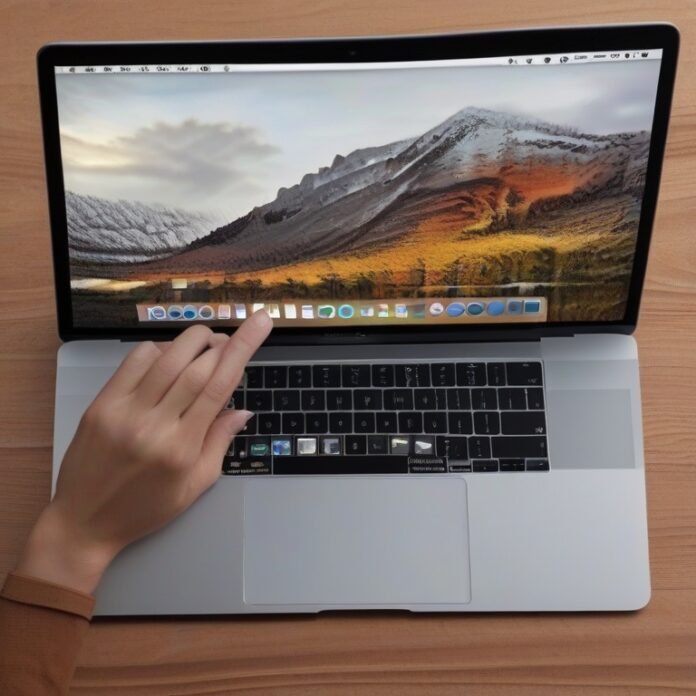Last Updated on May 18, 2024 by sunjava22
Mastering Your Mac: How Do You Screenshot on Mac
Whether you’re working on a project, troubleshooting an issue, or want to save memory, capturing what’s on your screen can be incredibly useful. Luckily, if you’re a Mac user, you have a few options for taking screenshots and recording your screen. In this article, we’ll walk you through the different methods and shortcuts for capturing your Mac screen so you can become a screenshot pro!
Taking a Screenshot on Your Mac
There are a few different keyboard shortcuts you can use to take a screenshot on your Mac, depending on what you want to capture. Let’s start with the most basic option: capturing the entire screen. If there’s an image, webpage, or anything else on your screen that you want to save, simply press Shift + Command + 3. A thumbnail of your screenshot will appear in the bottom right corner of your screen. You can click on it to edit or share the screenshot right away or wait for it to appear on your desktop.
If you only want to capture a portion of your screen, press Shift + Command + 4 instead. This will turn your cursor into a crosshair. Move it to where you want to start the screenshot, click and drag to select an area, and then release your mouse or trackpad. You can press the Escape key at any time to cancel taking the screenshot.
Now let’s say you want to capture just one window or menu on your screen. This is where things get a bit more specific. First, press Shift + Command + 4 as before. Then, press the spacebar. This will change your cursor into a camera icon. Hover over the window or menu you want to capture until it is highlighted in blue. Once it is selected, click to take the screenshot.
Recording Your Screen Using the Screenshot App
For longer recordings or more specific options, you can also use the built-in Screenshot app on your Mac. To open it, simply press Shift + Command + 5. The screenshot toolbar will appear on your screen, and you can drag it around to move it if you’d like.
The buttons on the left side of the toolbar allow you to capture a still image of your screen, record your entire screen, or record a specific portion of your screen. You can click the record entire screen button to make a video recording of everything on your screen. Alternatively, click the record selected portion button to capture a specific area. A recording area will appear on your screen, and the rest of your screen will dim slightly.
You can move the frame to reposition it and drag the edges to adjust its size. When you’re ready to start recording, click the record button. The screenshot toolbar will disappear, and your Mac will start recording the screen. To stop the recording, click the stop recording button in the menu bar, or use the keyboard shortcut: Command + Control + Escape.
Your screen recording will appear as a thumbnail in the bottom right corner of your screen, and you can click on it to edit or share it right away. If you prefer, you can also wait for it to appear on your desktop.
Mastering Your Mac’s Screenshots
Now that you know the different methods and shortcuts for taking screenshots and recording your screen on a Mac, you’re well on your way to becoming a pro. But there are a few other tips and tricks that can take your screenshot game to the next level.
Customizing Screenshot Settings
In addition to capturing screenshots and recordings, the Screenshot app also allows you to customize some settings. To access these options, open the app by pressing Shift + Command + 5 and then click Options in the toolbar. From here, you can choose where your screenshots are saved and set a timer for capturing the screen.
Adding Annotations
The Screenshot app also allows you to add annotations to your screenshots and recordings. Simply click on the thumbnail of your screenshot or recording to open it in the Markup window. Here, you can add text, shapes, highlights, and more to your image. When you’re finished, click Done to save your edited screenshot.
Using Third-Party Apps
While the built-in Screenshot app is a handy tool, some users may prefer more advanced options. In this case, there are many third-party apps available for download that offer additional features and customization options.
Some popular options include Lightshot, Skitch, and Snagit. These apps allow you to capture screenshots using different methods, such as scrolling captures and timed screenshots. They also offer built-in editing tools and allow for easy sharing on various platforms.
Troubleshooting Screenshot Issues
If you’re having trouble taking a screenshot on your Mac, there are a few potential solutions you can try. First, make sure that your keyboard shortcuts are all working correctly. You can test this by trying out different shortcuts in other applications.
If that doesn’t work, try restarting your Mac or updating your operating system. If the issue persists, it’s possible that you may have a hardware problem with your Mac or keyboard. In this case, it’s best to contact Apple Support for further assistance.
Conclusion
Now that you know all about taking screenshots and recording your screen on your Mac, you can use these skills for work, school, or personal projects. Whether you want to save an important document, capture a funny moment on video, or troubleshoot an issue with your device, knowing how to take screenshots and record your screen will definitely come in handy. So go ahead and give it a try – you’ll be mastering your Mac in no time!




